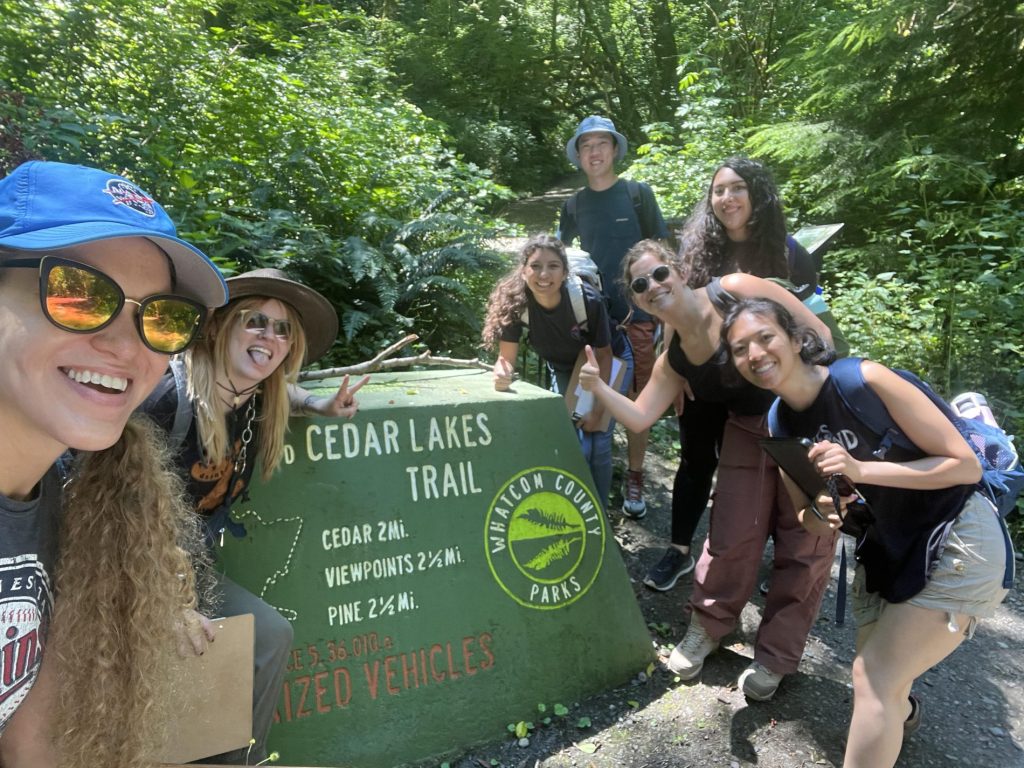For many ESS students, the summer field geology course is a mind-expanding opportunity to confront the complexity of geologic systems face-to-face. It is an opportunity to integrate concepts and techniques from core courses and apply them to “full strength” geologic problems. Covid-19 and restructuring of the UW summer budget both disrupted ESS’s long tradition of field training in Montana, driving us to consider a Seattle-based field course. The course combines skill-development in field observations and mapping with geophysics, engineering geology, geographic information systems (GIS) and report-writing.
The newly-designed course, Pacific Northwest Field Geology with GIS (ESS 401), follows the traditional intensive six week format, minus the logistics of transplanting students and faculty to Montana. The course draws from the spectacular geology of western Washington: measuring section in the glacial stratigraphy; landslide mapping in the field and using lidar-derived topographic maps; bedrock mapping in the Lopez Structural Complex; geologic mapping in the Naches Formation near Snoqualmie Pass; a structural interpretation of the Chuckanut Mountains south of Bellingham, including a down-plunge projection of the folds; and a gravity survey and cross section from geotechnical boring logs across the Seattle Fault Zone.

Working locally has additional benefits. Because we have access to department computer labs throughout the course, students can build projects with GIS fully integrated, so each project interleaves field and lab work. Because we can draw on our local contacts, we are able to engage professional geologists outside UW to meet with students in the field and highlight the career-relevance of the coursework. Students build expertise in the local geology and geologic data sources, further advancing their preparation for geology jobs in our region. And the locally-hosted camp means that students with family or other obligations that prevent them from traveling can fully participate in this important capstone experience. This benefit extends to faculty and to graduate teaching assistants: we expect to have a growing roster of faculty instructors who participate in the summer course, because they will no longer have to leave their families (or their laboratories) behind.
Many people were involved in creating this new course, including Professors Juliet Crider, Steven Walters, Cailey Condit, Darrel Cowan, and Alison Duvall, and graduate students Elizabeth Davis, Erich Herzig, Max Needle and Paul Morgan. ESS graduate students Tristan Bench, Jonathan Gates, and Emma Heitmann helped ensure that the first offerings of the course ran smoothly.
The ESS Summer Field Course remains an important and transformative capstone experience for students. The new format enables ESS to make a continued commitment to field training, while enhancing access for students.